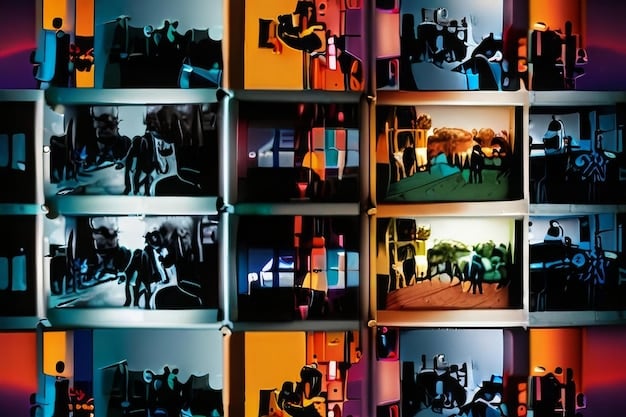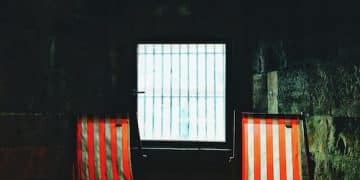Cable Originals: Book Adaptations That Do Justice to the Source Material

Cable Originals for Book Lovers: Adaptations That Do Justice to the Source Material explores how select cable networks have successfully translated beloved books into compelling television, respecting the original narratives and characters while captivating new audiences.
For book lovers, there’s always a sense of trepidation when a beloved novel is adapted for the screen. Will the essence of the story be captured? Will the characters remain true to their literary counterparts? Fortunately, some cable networks have risen to the challenge, creating cable originals for book lovers that not only entertain but also honor the source material.
Faithful Adaptations: Cable TV’s Literary Successes
Cable television has become a fertile ground for literary adaptations, offering the space and creative freedom to delve deeper into complex narratives. These adaptations often attract both loyal readers and new viewers, creating a unique cultural phenomenon.
The Allure of Limited Series
One of the key reasons cable networks excel in adapting books is their embrace of the limited series format. This allows for a more comprehensive exploration of the source material, free from the constraints of traditional network television.
Creative Freedom and Fidelity
Cable networks often grant creators more artistic license, resulting in adaptations that are both faithful and innovative. This balance is crucial for satisfying fans of the books while also creating a compelling television experience.
- Deeper Character Development: Cable adaptations often provide more screen time for exploring the complexities of character motivations and relationships.
- Complex Plotlines: Unlike film adaptations, cable series can delve into intricate plotlines and subplots, maintaining the integrity of the original story.
- High Production Values: Cable networks often invest heavily in production design, creating visually stunning adaptations that immerse viewers in the world of the book.
The success of cable originals for book lovers lies in their ability to strike a delicate balance between staying true to the source material and crafting a compelling television narrative. This approach often results in critical acclaim and a dedicated fanbase.
“Big Little Lies”: A Coastal California Drama
“Big Little Lies,” based on the novel by Liane Moriarty, is a prime example of a literary adaptation that resonated with audiences and critics alike. The series transported viewers to the affluent community of Monterey, California, where dark secrets simmer beneath the surface of seemingly perfect lives.
The Power of Ensemble Cast
One of the strengths of “Big Little Lies” is its stellar ensemble cast, featuring Nicole Kidman, Reese Witherspoon, and Shailene Woodley. Each actress brought depth and nuance to their respective characters, capturing the complexities of Moriarty’s portrayal of motherhood and female friendship.
Exploring Dark Themes
The series tackled challenging themes such as domestic abuse, infidelity, and the pressures of societal expectations. By addressing these issues with sensitivity and nuance, “Big Little Lies” sparked important conversations about the realities of modern womanhood.
“Big Little Lies” captured the essence of Moriarty’s novel, while also adding its own unique visual flair. The stunning cinematography and evocative soundtrack created a captivating viewing experience that left audiences eagerly awaiting each new episode. It serves as a testament to how well cable originals for book lovers can be done.
“Game of Thrones”: A Fantasy Epic Brought to Life
“Game of Thrones,” based on the “A Song of Ice and Fire” novels by George R.R. Martin, is arguably one of the most ambitious and successful literary adaptations in television history. The series brought Martin’s sprawling fantasy world to life with breathtaking scope and detail.
Faithful to the Source Material (Mostly)
For several seasons, “Game of Thrones” remained remarkably faithful to Martin’s novels, capturing the intricate political machinations, epic battles, and complex characters that defined the books. This fidelity earned the series a legion of devoted fans who appreciated the show’s attention to detail.
The Challenge of Adaptation
As the series progressed, it eventually surpassed the published material, requiring the showrunners to make their own creative decisions. While some fans were disappointed with the later seasons, the initial adaptation of Martin’s novels remains a triumph of television storytelling.
- World-Building: The show meticulously recreated Martin’s detailed world, from the icy landscapes of Winterfell to the sun-drenched shores of King’s Landing.
- Character Development: The series allowed actors to embody the iconic characters of the novels, bringing depth and nuance to their performances.
- Political Intrigue: “Game of Thrones” captured the complex political landscape of Westeros, where alliances shifted and betrayals were commonplace.
“Game of Thrones” demonstrated the potential of cable originals for book lovers to reach a massive audience, transcending genre boundaries and becoming a global cultural phenomenon. It set a new standard for fantasy television, inspiring countless adaptations in its wake.

“The Handmaid’s Tale”: A Dystopian Nightmare
“The Handmaid’s Tale,” based on the novel by Margaret Atwood, is a chilling and timely adaptation that explores the dangers of religious extremism and the suppression of women’s rights. The series brought Atwood’s dystopian world to life with visceral intensity.
A Disturbing Reflection of Reality
One of the reasons “The Handmaid’s Tale” resonated so deeply with audiences is its ability to reflect contemporary social and political anxieties. The series served as a cautionary tale about the fragility of democracy and the importance of protecting fundamental human rights.
Visual Storytelling
The series employed a distinctive visual style, using stark imagery and muted colors to create a sense of oppression and dread. The cinematography and production design effectively conveyed the bleak atmosphere of Gilead, the totalitarian regime at the heart of the story.
“The Handmaid’s Tale” is an example of how cable originals for book lovers can not only entertain but also provoke important conversations about the pressing issues of our time. By staying true to the spirit of Atwood’s novel, the series became a powerful and unsettling work of art.
“Sharp Objects”: A Dark Southern Gothic Mystery
“Sharp Objects,” based on the novel by Gillian Flynn, is a gripping and atmospheric adaptation that delves into the dark secrets of a small Missouri town. The series captured the novel’s haunting tone and explored the complexities of intergenerational trauma.
Atmospheric Storytelling
The series created a palpable sense of unease through its atmospheric cinematography, unsettling score, and deliberate pacing. The setting of Wind Gap, Missouri, became a character in itself, reflecting the town’s decaying moral fabric.
Exploring Trauma and Addiction
“Sharp Objects” unflinchingly explored themes of trauma, addiction, and self-harm. The series offered a nuanced portrayal of Camille Preaker, the damaged protagonist, and her struggles to confront her past.
- Complex Female Characters: The series centered on a trio of complex female characters grappling with their own demons, challenging traditional representations of women on television.
- Psychological Depth: “Sharp Objects” delved into the psychological depths of its characters, exploring the roots of their pain and the ways in which they coped with trauma.
- Southern Gothic Atmosphere: The series captured the dark and brooding atmosphere of Flynn’s novel, creating a sense of foreboding and suspense.
The adaptation of “Sharp Objects” demonstrated how cable originals for book lovers can excel in the realm of crime thrillers. The series’ unflinching exploration of dark themes and its atmospheric storytelling made it a standout entry in the genre.
“Station Eleven”: A Post-Apocalyptic Hope
“Station Eleven,” based on the novel by Emily St. John Mandel, is a post-apocalyptic tale that focuses on the resilience of the human spirit and the importance of art in the face of devastation. The series offered a hopeful vision of a world rebuilding after a global pandemic.
Focus on Humanity and Art
Unlike many post-apocalyptic narratives, “Station Eleven” placed a strong emphasis on the power of art and human connection to heal and rebuild. The Traveling Symphony, a group of actors and musicians who travel the Great Lakes region, became a symbol of hope and resilience.
Non-Linear Storytelling
The series utilized a non-linear narrative structure, weaving together past and present timelines to explore the characters’ backstories and their connections to one another. This approach added depth and complexity to the story, creating a rich and rewarding viewing experience.
Through a focus on character development, non-linear storytelling, and a hopeful outlook, the cable adaptation became an example of a cable original for book lovers showcasing the power of the arts and human connection to triumph over adversity.
“Normal People”: An Irish Love Story
“Normal People,” adapted from Sally Rooney’s novel, offers an intimate and nuanced exploration of young love and the complexities of human connection. The series captured the raw emotions and subtle dynamics of Rooney’s prose in a visually stunning manner.
Intimate and Nuanced Portrayals
The series is celebrated for its intimate and nuanced portrayals of Connell and Marianne, the two protagonists, and their evolving relationship. The actors, Paul Mescal and Daisy Edgar-Jones, delivered compelling performances that captured the vulnerability and authenticity of their characters.
Visual Storytelling
The series used a minimalist visual style, relying on close-ups and natural lighting to create a sense of intimacy and realism. The cinematography effectively conveyed the emotions of the characters, drawing viewers into their world.
By focusing on intimate portraits of relationship dynamics, this becomes one of the best available cable originals for book lovers, delivering a compelling portrayal of youth in love.
| Key Point | Brief Description |
|---|---|
| 📚 Faithful Adaptations | Cable TV excels at adapting books by staying true to the source material. |
| 🎭 Ensemble Casts | Shows like “Big Little Lies” benefit from strong ensemble casts. |
| 🌟 Visual Storytelling | Series use cinematography to enhance emotional impact. |
| 🌍 Impactful Themes | Adaptations tackle important social and political issues. |
Frequently Asked Questions
▼
Cable networks typically allow for more creative freedom and longer running times, enabling deeper dives into complex plots and character development. This contrasts with the constraints often found in network television.
▼
A successful adaptation maintains the core themes and characters of the original book while also taking advantage of the visual medium to enhance storytelling. It respects the source material while adding something new.
▼
Yes, there is the risk of alienating fans if the adaptation deviates too much from the source material or fails to capture the essence of the story. Meeting high expectations is a significant challenge.
▼
Adaptations can significantly boost the popularity of the original book, introducing it to a wider audience who may not have otherwise discovered it. They can also create renewed interest in the book.
▼
Many networks are constantly developing new adaptations, so viewers can anticipate a steady stream of book-based content. Keep an eye on upcoming announcements from major cable networks and streaming services.
Conclusion
In conclusion, cable originals for book lovers have offered memorable experiences to those who enjoy both reading and watching television. From fantasy epics to relationship explorations, these adaptations showcase the potential of cable networks to bring literary works to life with creativity and integrity.





